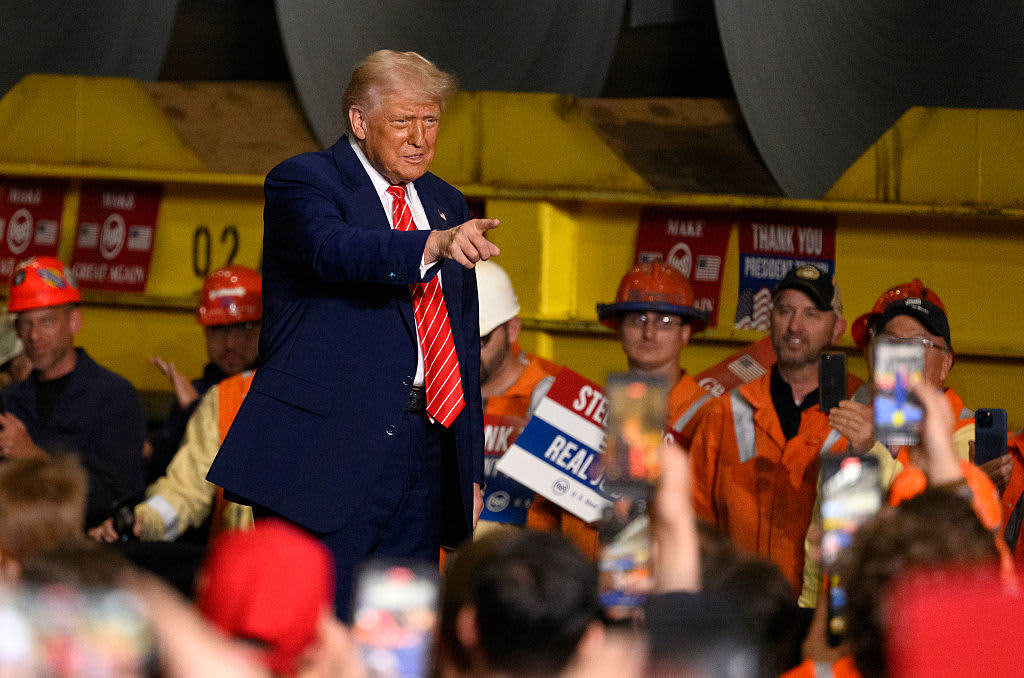
In recent years, international trade has been a battleground where economic might intertwines with political posturing, with tariff policies serving as the ammunition of choice. Nowhere has this been more evident than in the escalating trade tensions between the United States and the European Union, especially surrounding steel imports. The dramatic decision by the U.S. to double steel tariffs from 25% to 50% under President Donald Trump ignited a fierce response from the EU, setting off a series of retaliatory measures that reveal not only the fragility of global trade relations but also the high stakes in protecting domestic industries.
The Catalyst: U.S. Steel Tariff Hike
The Trump administration’s sharp tariff escalation was framed as a necessary shield for American steel producers. Speaking at a steel plant in Pennsylvania, President Trump laid down the gauntlet, asserting that at this elevated 50% tariff, foreign steel “can no longer get over the fence.” This vivid image portrays a barricade erected to stop imports dead in their tracks, giving domestic manufacturers room to breathe and thrive. The tariff increase was part of a broader economic strategy focused on revitalizing U.S. manufacturing and protecting national security interests, signaling a hardline approach to economic sovereignty. However, this aggressive move also reflected the administration’s readiness to wield trade barriers as blunt instruments, without much concern for diplomatic fallout or multilateral norms.
The EU’s Retaliation: Striking Back with Precision
The European Union wasted no time in mounting a firm rebuttal, labeling the tariff hike “unjustified” and a destabilizing force in transatlantic trade relations. The EU Commission swiftly unveiled a €26 billion package of countermeasures targeting an eclectic basket of American goods—motorcycles, bourbon, peanut butter, and jeans among them. This diverse mix isn’t merely about economic retaliation; it’s a strategic message: hit where it hurts and disrupt consumer favorites to maximize political leverage. The EU’s phased approach, resuming and expanding tariffs that had been previously paused, underscores a calculated escalation designed to pressure the U.S. into reconsidering its stance. This tit-for-tat dynamic exemplifies the delicate balancing act between defending domestic economic interests and sustaining long-term international partnerships.
Legal and Economic Complexities Behind the Scene
Beneath the headline-grabbing tariff increases lies a tangle of legal challenges and economic ripple effects. President Trump’s use of the International Economic Emergency Powers Act to justify the steel tariffs has faced judicial rebuffs, with U.S. courts questioning the legal authority underpinning such measures. This legal uncertainty injects instability into trade policy, making it difficult to predict whether these tariffs can withstand ongoing scrutiny and persist over time.
Economically, the double-edged sword of protectionism begins to show its sharp edges. While tariffs aim to shelter American steelmakers from cheaper foreign competition—ostensibly preserving jobs and stimulating reinvestment—these barriers also raise input costs for U.S. manufacturers dependent on steel. Higher production expenses risk passing through to consumers in the form of pricier goods, potentially eroding the competitive edge of American businesses. From the European perspective, retaliatory tariffs simultaneously raise the cost of American exports in European markets, hurting U.S. exporters and complicating the web of global supply chains that fuel both economies.
The broader ramifications extend into the realm of global governance. Trade tensions like these put strain on multilateral institutions tasked with resolving disputes and maintaining equitable trade practices. The ongoing U.S.-EU steel tariff dispute acts as a microcosm illustrating how protectionist impulses and retaliatory tactics can fracture international trade systems, injecting uncertainty into markets that thrive on stability and predictability.
As nations leverage tariffs as economic shields and bargaining chips, businesses and consumers alike find themselves caught in a tug-of-war with no easy resolutions. The immediate gains for certain sectors often come with longer-term costs, highlighting the precarious trade-off between short-term industrial protection and sustained economic health.
To wrap it up, the bold decision by the United States to double steel tariffs marked a significant escalation in an already fraught transatlantic trade relationship. The European Union’s rapid and targeted countermeasures, amounting to billions in tariffs on U.S. goods, demonstrate an unwavering commitment to defending its economic terrain and influencing trade negotiations. These developments expose the intricate interplay between national economic policies and the interconnected web of global commerce. Looking ahead, resolving such disputes will demand navigating a complex matrix of legal battles, diplomatic negotiations, and economic consequences that reverberate far beyond steel mills and customs borders. The stakes are high, the blows are hard, and the global market moves like a powder keg ready for the next spark. Boom.






